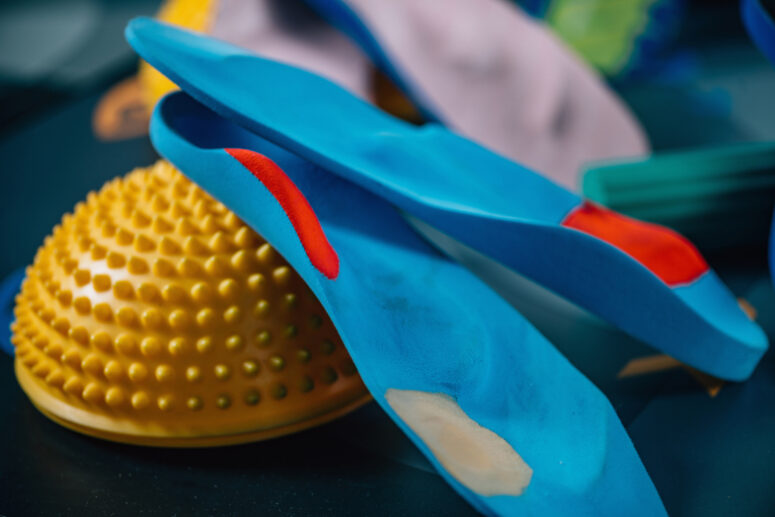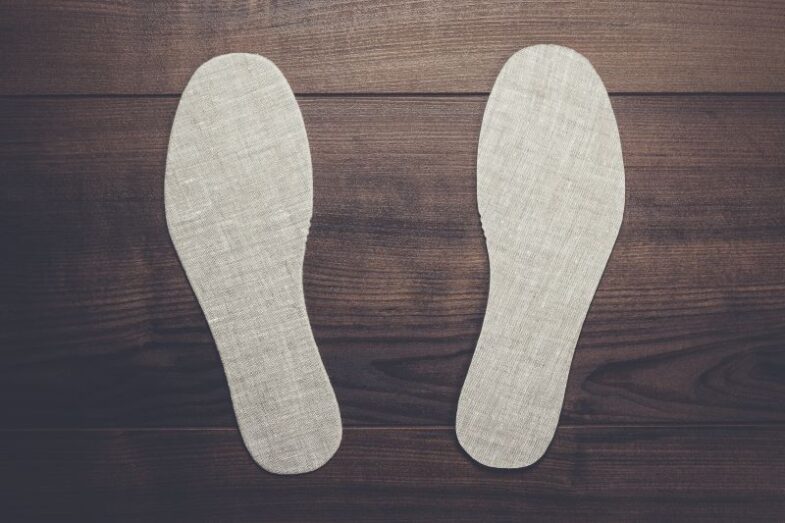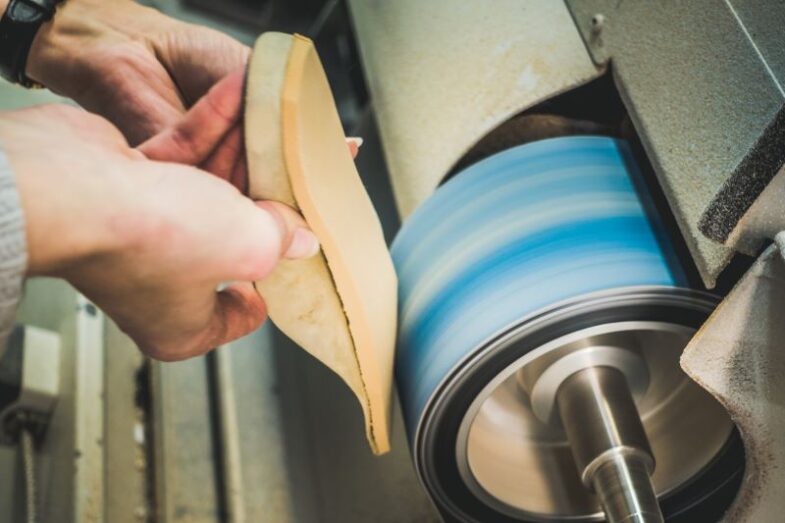If you have bad feet, orthotics can save your feet from hours of uncomfortable walking and the subsequent foot pain at the end of the day. Depending on what might be the issue at hand, some people might do fine with over-the-counter orthotics while others might be better served by custom orthotics.
No matter the issue with your feet, everyone has to start somewhere when it comes to potential solutions. Whether you have a bone disorder or a history of injury to your feet, you deserve to live a comfortable and mobile life. Follow along with this article to learn more about orthotics and what type might be the best for you.
 What are Orthotics?
What are Orthotics?
If you’re not already familiar with orthotics, they are shoe inserts that help correct abnormal movement of the foot while walking. Not all orthotics are created equally, though. They tend to be made with different materials depending on what condition or movement they are trying to correct. There are orthotics that you can get custom-made or ones that you buy over the counter. Depending on your personal needs, you might choose to use either one of these options.
When you have foot pain, you might think that your foot simply needs to be cushioned more. This is where many people go wrong with orthotics. Without finding out what the specific problem is that is affecting your foot, you won’t be able to relieve the pain to the full extent. This is why you should always consult your doctor about the type of pain you’re having and where you’re experiencing it. Your doctor will be able to give you information on what the best orthotics will be in your personal situation.
Not only will this save you money on orthotics that won’t work but it will also give you your mobile life back faster, as your pain will go away without having to experiment with different treatments. Follow along to learn more about different orthotics and their functions.
What Orthotics Do For You
You might be wondering more about how orthotics can help you in your journey to healing from foot pain. Orthotics manufacturers create their products for a few reasons. The first is usually to provide more comfort to the wearer, creating a more cushioned experience for customers. Usually, these types of orthotics are made from memory foam and tend to be soft and squishy.
Another reason orthotics are made is to relieve pain caused by abnormal foot movement. Foot pain is not normal, so if you are experiencing it, it’s a cause for some concern. Foot pain is a result of an abnormality in your foot, so orthotics correct whatever abnormality you may be experiencing. For abnormalities in the foot, memory foam and squishy materials are not enough to correct your foot. Manufacturers opt for harder materials that provide more support to keep the foot in place.
So, the easiest way to tell the difference between orthotics made for cushion or correction is to bend them. If you can easily bend or roll your insert up, then it’s meant for cushion and not for support. On the other hand, if you try to bend the insert and the middle portion doesn’t budge, the insert is made for foot correction and not cushioning.
 Rigid vs. Soft Orthotics
Rigid vs. Soft Orthotics
Rigid orthotics tend to be made out of plastic materials. Because they’re solid, you’ll have a period of adjustment as you get used to having them in your shoes. The more you wear these orthotics, the more your body becomes accustomed to them. And because they correct the movement of your foot, they will eventually become very comfortable to wear.
Here are some of the conditions that rigid orthotics are recommended for:
- Achilles tendonitis
- Heel inflammation
- Sesamoiditis treatment
- Foot, thigh, leg, and lower back pain caused by abnormal foot movement
- Plantar fasciitis, usually caused by flat feet
Soft orthotics are simply soft on your feet. They provide more cushion to take some pressure off of spots that might make your feet sore or uncomfortable. They treat heel pain and discomfort most often. These soft inserts will mold themselves to your feet, specifically the more painful areas. Additionally, they provide more arch support at the same time. This is why they’re good for athletes.
Consult your doctor to determine the cause of the pain in your feet and to find the best orthotic insert for your shoes.
Custom Insole vs Over the Counter Options
There is a world of difference between over-the-counter orthotics and custom-made insoles. Not only is there a pretty large difference in quality but there also tends to be a pretty big price difference. Of course, over-the-counter insoles won’t be made to fit your feet while custom insoles will be made very specific to your body’s needs. This is something to keep in mind when deciding whether you need custom insoles or if you can get by on generic over-the-counter options.
You don’t need a prescription to get over-the-counter inserts. That’s why people usually start trying to treat their own foot pain by buying them. However, without knowing the true issues with your feet, you’re unlikely to fix the problem on your own. These inserts might provide some initial comfort and last you about a year or so.
On the other hand, custom orthotics will address the root issue causing your foot pain. While they are more expensive than over-the-counter options, they will also last you much longer and are guaranteed to fix your pain problem. Additionally, it can help you fix problems you might have when walking or running, eventually putting off potential surgery for years.
 Find Rigid Arch Support
Find Rigid Arch Support
If you find that you’re having trouble with foot, heel, or ankle pain, it’s important to consult a professional. If you live in Illinois and are experiencing trouble with your feet, contact us at Foot & Ankle Specialists of Illinois. We provide top-notch care for a variety of conditions. Don’t let pain get in the way of doing the things that you love! Book an appointment with us today.

